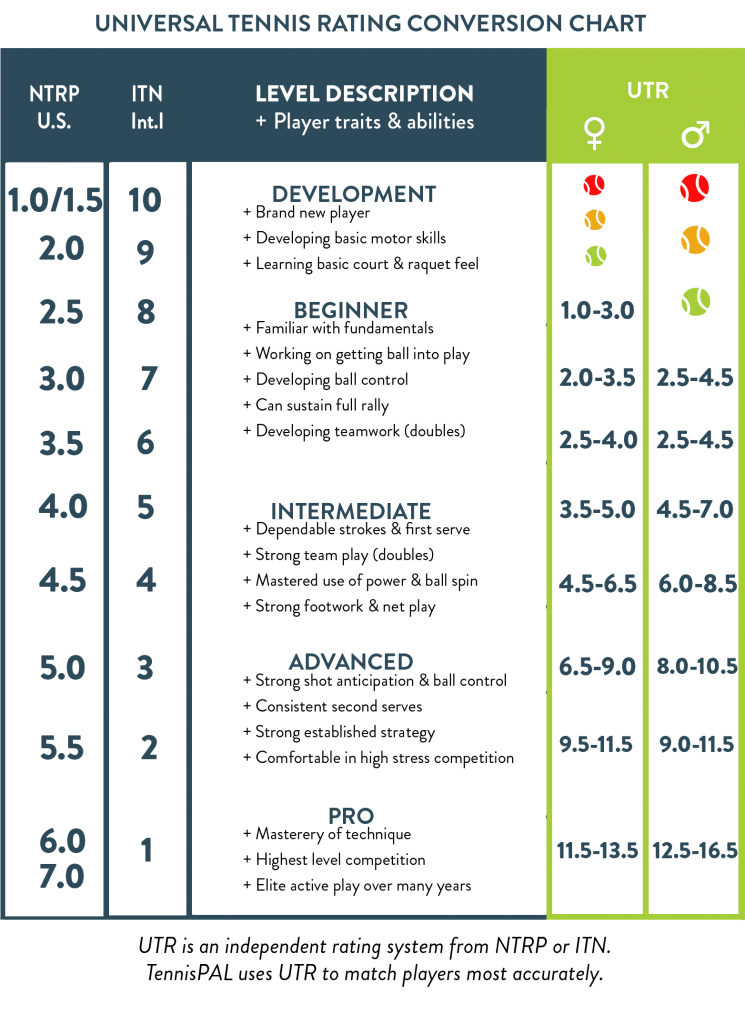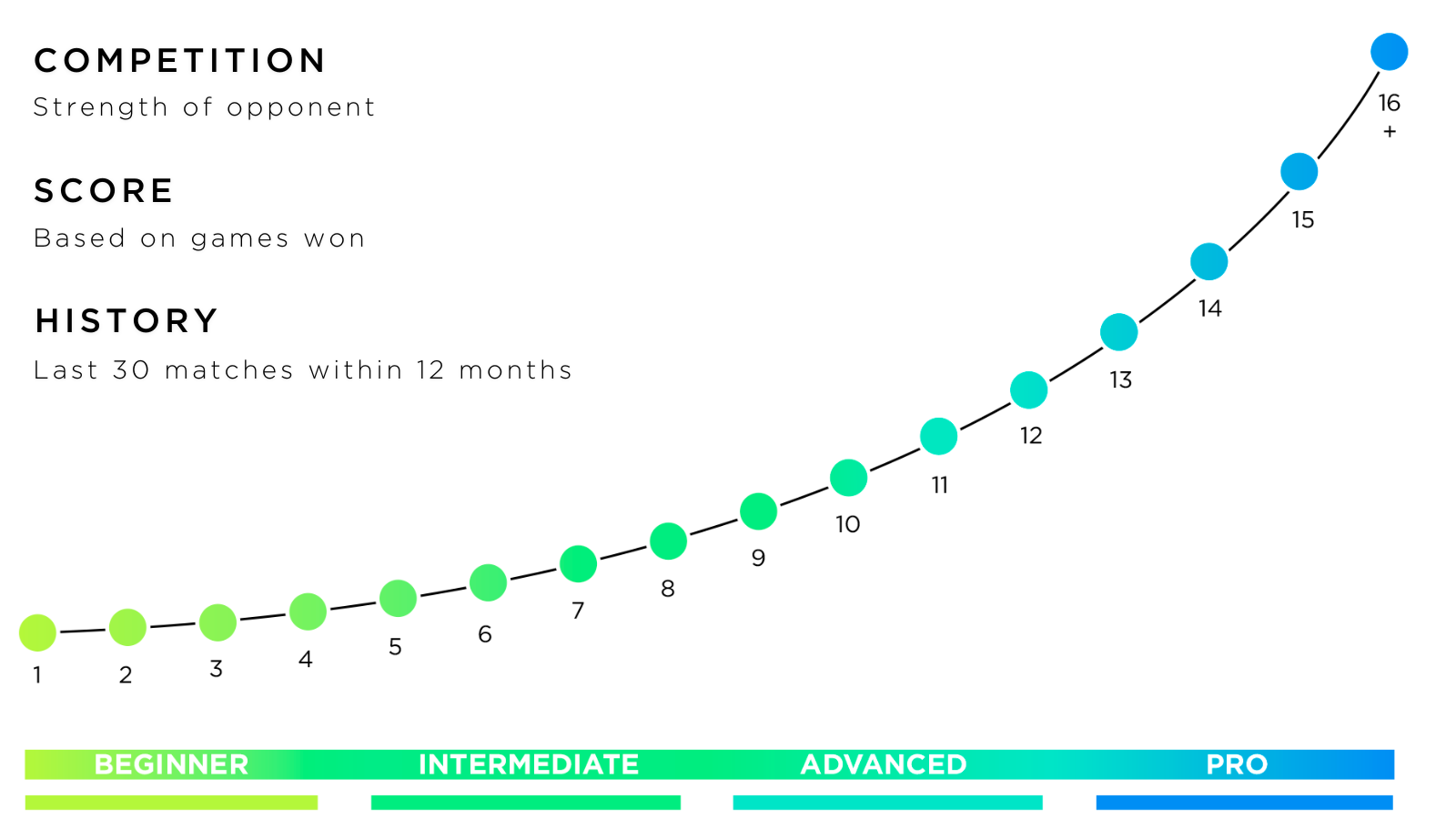When it comes to assessing a tennis player’s skill level and performance, two prominent rating systems are commonly used: the United States Tennis Association (USTA) Rating and the Universal Tennis Rating (UTR). While both systems serve a similar purpose, they have distinct characteristics and provide players with different insights into their game. This article aims to explore the disparities between these rating systems and shed light on their unique features.
Table Of Contents
Understanding USTA Ratings
The USTA utilizes the National Tennis Rating Program (NTRP) as a benchmark for evaluating players’ capabilities, skills, and performance levels. Developed in the 1970s, the NTRP has been instrumental in categorizing players into beginner, intermediate, and advanced levels. By participating in the USTA program, players gain the ability to self-assess their game and identify areas of improvement necessary to enhance their skills.

Exploring UTR Ratings (Universal Tennis Rating)?
The Universal Tennis Rating (UTR) is a global system that assesses the proficiency of tennis players, irrespective of their age, gender, or nationality. In recent years, UTR has gained prominence as the metric system of tennis worldwide. Using a 16-point scale, UTR offers a comprehensive evaluation of a player’s game, skill set, and overall capability. Notably, all professional ATP and WTA players possess UTR ratings.

Measurement of USTA Rating
The USTA maintains records for each player throughout the season. Information such as tournament participation, scores, and opponents are recorded, and at the end of the year, these results are utilized to evaluate a player’s rating. The NTRP system employs a 7-point scale to assess a player’s capability, providing insights into their level and highlighting the necessary steps for advancement. For instance, ATP’s Roger Federer and Novak Djokovic are rated at 7+, while the best player at a club typically holds a rating of 6 or 5.5. The average player usually falls around the 3.5 NTRP mark.
Measurement of UTR: Similar to the USTA, the UTR maintains a comprehensive record of each player’s performance. However, UTR distinguishes itself as the most accurate and reliable index of tennis skill available to players, coaches, tournaments, and federations.
This rating system incorporates factors such as competition strength (opponent’s level), scores (based on games won), and historical performance (last 30 matches within 12 months) to determine a player’s rating. UTR employs a 16.5-point scale with two decimal places, such as 13.54. Every match a player competes in influences their UTR. For example, Novak Djokovic currently holds the highest UTR at 16.18, while Bianca Andreescu has a UTR of 13.44. Many players now prioritize UTR due to its superior accuracy and increasing popularity.
Distinguishing Factors between UTR and USTA Rating
Several key differences set UTR and USTA Rating apart:
- Scale: NTRP employs a 7-point scale, whereas UTR uses a 16-point scale to provide a more precise assessment of a player’s skills and capabilities.
- Precision: UTR is recognized as the most accurate ranking system globally, surpassing the basic checklist-style approach of NTRP.
- Popularity: UTR has gained significant traction and popularity among players, making it the preferred choice for many over NTRP.
Both USTA Rating and UTR serve as vital rating systems for evaluating tennis players’ skill levels. However, UTR has emerged as the more precise and widely embraced system, offering players a comprehensive and accurate understanding of their abilities. With its 16-point scale and meticulous evaluation methods, UTR provides players with a competitive edge and the necessary insights to elevate their game. Ultimately, leveraging UTR enables players to identify specific areas of improvement and take their tennis skills to new heights.
FAQs
What are effective strategies for rapidly boosting my UTR rating?
- Play More Matches
- Compete in Tournaments
- Seek Quality Opponents
- Focus on Consistency: UTR takes into account your performance over a span of matches, so consistency is key.
- Work on Fitness and Conditioning: Physical fitness plays a crucial role in your overall performance on the court.
- Seek Coaching and Training
- Analyze Match Performance
Set Realistic Goals
Does UTR expire?
No, UTR ratings do not expire. Once you have a UTR rating, it remains valid indefinitely. However, it’s important to note that UTR ratings are dynamic and can change over time based on your performance in recent matches. As you play more matches and accumulate new results, your UTR rating will be updated accordingly to reflect your current skill level.

